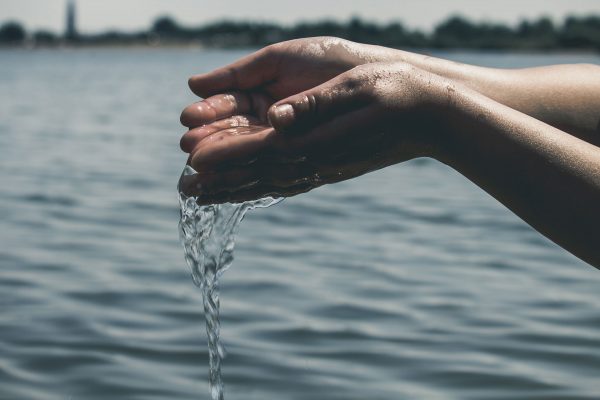Levi’s | LS&Co Open Sources Its Innovative Water Finishing Techniques to the Apparel Industry

At Levi Strauss & Co., our business depends on water. From cotton to manufacturing to consumer care, this precious resource plays a vital role over the lifetime of our products. We’ve studied this in great depth, including two comprehensive life cycle assessments. We know exactly how much water a pair of Levi’s® 501® jeans traditionally uses over its lifetime — and where.
That knowledge helped us make a lot of changes in our business to reduce our own water impact. And it’s helped us educate consumers about the impact of their laundering habits. But for us, that’s not enough. As a leading apparel company we have a responsibility to be a catalyst for change — because time and again we’ve found that where we lead, others follow.
That’s why last week on World Water Day, we took a cue from our neighbors in the tech industry and opened up our innovative Water<Less™ finishing techniques for anyone to use. The Water<Less™ process can save up to 96 percent of the water used in the denim finishing process. Since 2011, we have used the process to save more than 1 billion liters of water in our own manufacturing, and we’ve set a goal to use Water<Less™ techniques for 80 percent of our products by 2020.
Water scarcity is too important for us to keep these techniques to ourselves. Just as tech companies open their APIs in order to accelerate change, LS&Co. is welcoming our industry partners to build on what we have done to accelerate water conservation. We believe our Water<Less™ innovations can save the apparel industry at least 50 billion liters of water by 2020 — enough to supply every family in New Orleans for a year.
This isn’t the first time we’ve joined with others to address water issues. In 2005, we co-founded the Better Cotton Initiative (BCI), aimed at fundamentally changing how cotton is grown. Seventy percent of the water used by a pair of jeans is from cotton agriculture. BCI farmers use up to 18 percent less water than non-BCI farmers in comparable locations.
We’ve also saved 30 million liters of fresh water through the industry’s first Water Recycling and Reuse Standard, which we piloted with one of our vendors in China; we’re sharing that standard across our industry as well.
As a company, we are committed to doing even more in the future. At the White House Water Summit, we committed by 2020 to train 100 percent of LS&Co.’s corporate employees in a water education program we developed in partnership with the Project WET Foundation. The goal is to increase employee awareness of the social and environmental impacts of apparel, and to train you to become water conservation ambassadors so you can share what you’ve learned in your community.
Lastly, we’re working hard to educate consumers about reducing their impact through care labels, awareness campaigns including the “Are You Ready to Come Clean” consumer quiz and “Don’t Be a Drip” water education program as well as through ecommerce sales channels.
This sounds like a lot of work – and it is. But it’s absolutely vital, to our business, our employees, workers in our supply chain, their communities – and our entire planet. We want to use our leadership position in the apparel industry to spur even more innovative ways we can all work together to preserve this scarce, vital resource.
Michael Kobori is the Vice President of Social and Environmental Sustainability at Levi Strauss & Co. He leads the development of LS&Co.’s environmental vision and strategy, our efforts to collaborate with other brands on sustainability, and extend our standards throughout the supply chain, including mills and sundry suppliers.
